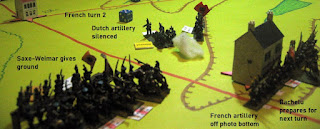The recently seen spectacular film, based (loosely) on real events, inspired me to write my own take of the Corsican. This will be about his generalship rather than his value (or lack of) to the human race. I will steer clear of his love life with Josephine or any of his other paramours.
All internet images have been removed from this post, sorry.
His tactics were aggressive and usually competent. His victories
were often more due to the way he had forced the enemy into battle. See below. Borodino
and Waterloo are examples of his use of aggressive and not so competent
tactics.
He was exceptional at operational strategy, the planning
of movement to bring the enemy to battle on his terms. This was his strongest
suit. He was a predator, viewing opposing armies as prey. Most other generals
aimed to force the enemy to retreat by threatening strategic points. Napoleon
always aimed to wipe them out. He didn’t annihilate them that often but quite
often beat them badly while seeking their total destruction. He often won by
using speed to force his enemy to fight at a disadvantage.
“There are many good generals in Europe, but they see too
many things; as for me, I see only masses. I seek to destroy them, knowing well
that the accessories will then fall of their own accord.” Napoleon
His operational genius led him to make grand strategic
errors based on the belief that his armies were invincible. He would have been
better off leaving Spain alone in 1808,
even more so, Russia in 1812. His armies were very tough, but not invincible.
Much of his success was due to his energy and his
attention to detail. He was a dynamo, providing much of his own staff work. Later in
his career his energy level slackened, possibly due to failing health. This coincided
with his enemies learning his ways. 1809 was his last hurrah. He was still up
to herculean bursts of energy, though his army was starting to show the wear
and tear of nearly constant attrition.
In 1813 the Allies came up with the Trachenberg Plan. Any army facing Napoleon in person would retreat. Any facing other French generals would attack. It worked, with a few misfires. Napoleon was finally cornered at Leipzig and very badly outnumbered.
Edit: one reader pointed out on another forum that Napoleon could have retreated before Leipzig. Rather than acknowledging defeat, he threw the dice hoping for a long shot win. He was a gambler. At Waterloo he should have broken off the battle once he learned of Blucher marching against his flank. Instead of accepting defeat he rolled the dice again and again was decisively defeated.
On the first day of the Waterloo campaign, his offensive was stalling near Charleroi. He arrived and fired up the attack. The Prussians were soon retreating. Then Napoleon sat down on a chair and fell asleep. French troops were told not to cheer to avoid waking him as they marched past. This was not the Napoleon of old. A series of blunders followed during the short campaign.
“A man has his day in war as in other things. I myself shall
be good for another six years, after which even I shall have to stop.”
Napoleon, 1805
In most of our games, centered on individual battles, we only rate commanders (if at all) on tactical ability. Operational skill doesn’t enter into it, not to mention grand strategy.
We might also consider the morale effect of successful
generals on their troops. French soldiers fought harder when Napoleon was in
the field, as did British led by Wellington or Prussians led by Blucher.
“I used to say of him [Napoleon] that his presence on the
field made the difference of forty thousand men.” Wellington




























